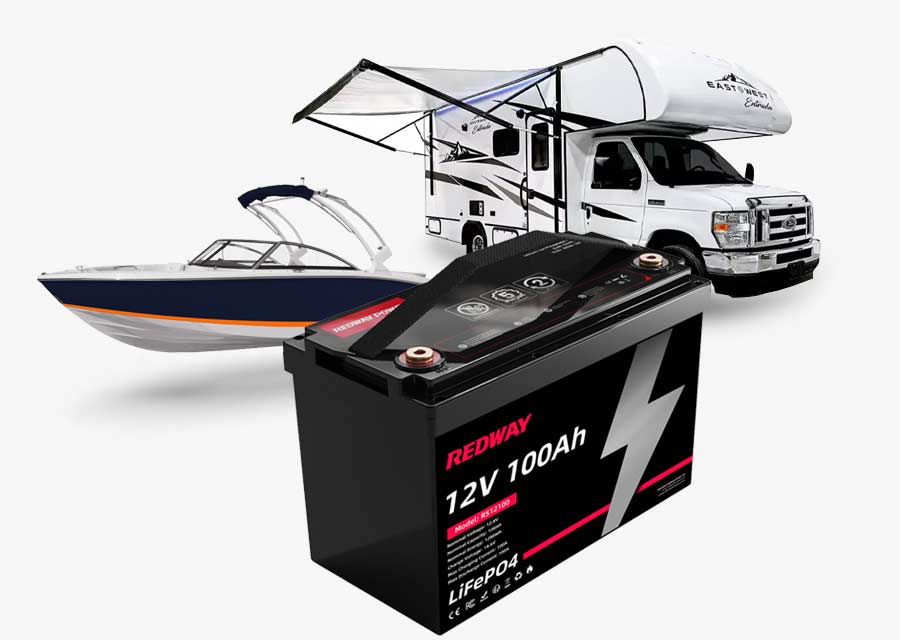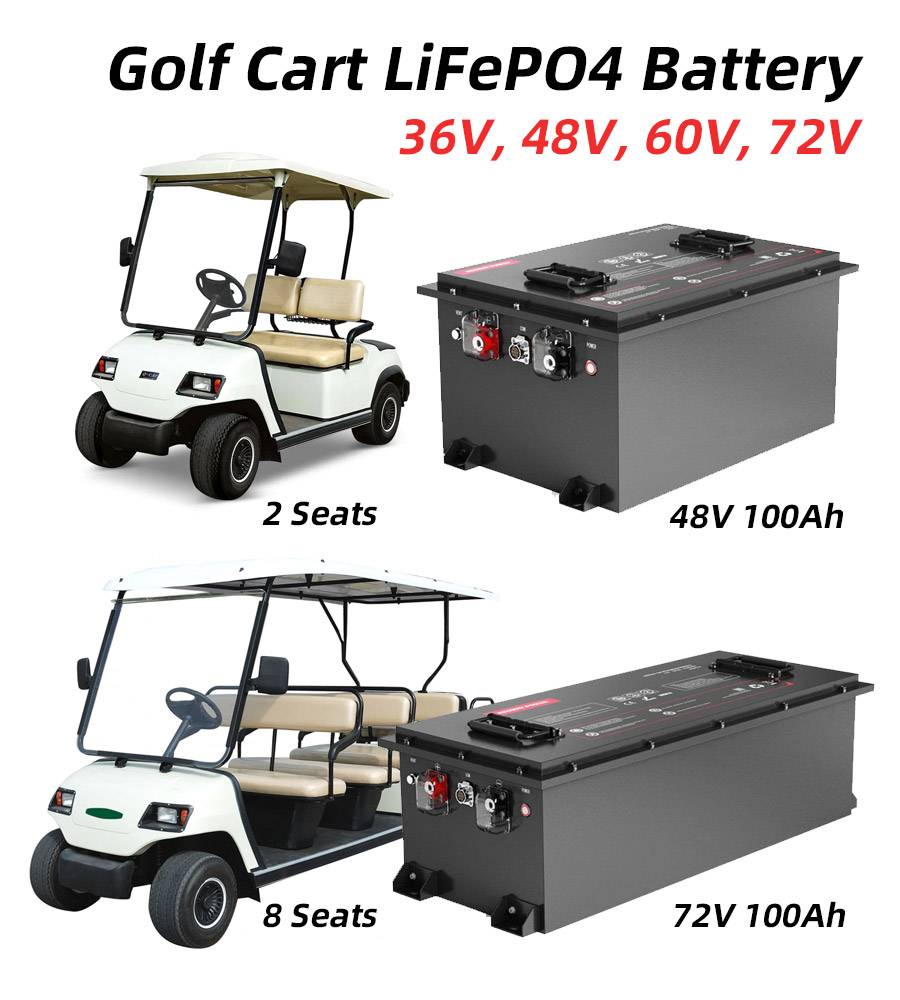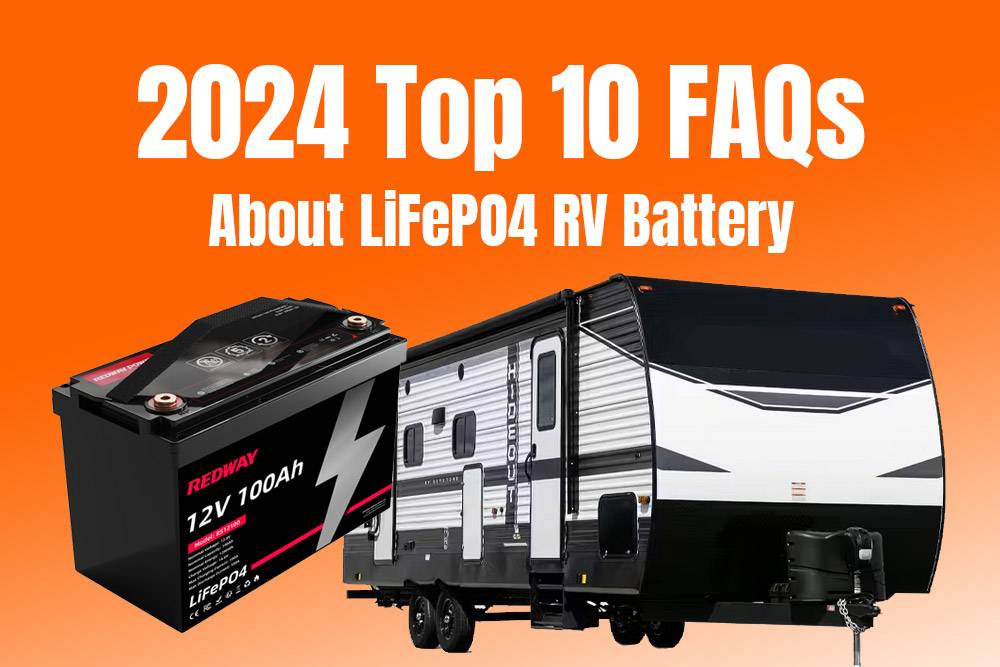Lithium batteries have revolutionized the golf cart industry, offering enhanced performance and longevity compared to traditional lead-acid batteries. However, proper charging practices are essential to maximize the lifespan and efficiency of lithium golf cart batteries. In this guide, we’ll delve into the intricacies of charging these advanced batteries and address common questions and concerns.
How Often Should You Charge Lithium Golf Cart Batteries?
For optimal performance, it’s best to charge your lithium golf cart batteries after each use, particularly if you’ve covered considerable distances. Lithium batteries benefit from frequent, partial charging rather than deep discharges. This practice helps maintain the battery’s state of charge and prolong its lifespan. By charging after every use, you ensure your lithium golf cart batteries are consistently ready for your next round of golf, maximizing both their longevity and performance.
Charging Conditions for Lithium Golf Cart Batteries
Ensure optimal performance and longevity by following these charging conditions:
- Temperature: Charge between 32°F and 104°F.
- Voltage: Use a compatible 48-volt lithium golf cart battery charger.
- Time: Monitor charging to prevent overcharging.
- Environment: Charge in a well-ventilated area.
- Cycles: Avoid deep discharges for battery lifespan.
Optimize your lithium battery charging for peak performance and durability.
How Long Does It Take to Charge a Lithium Golf Cart Battery?
Charging time for a lithium golf cart battery typically ranges from 1 to 3 hours, depending on factors like battery capacity and charger output. This variability allows for quicker charging with compatible chargers.
Can You Leave Lithium Golf Cart Batteries on the Charger?
To maintain optimal performance and longevity for lithium golf cart batteries, it’s best to avoid leaving them on the charger for prolonged periods and to follow proper charging procedures before and after storage, while also considering temperature conditions.
- Avoid Overcharging: Lithium golf cart batteries, including lithium-ion ones, should not be left on the charger for extended periods to prevent overcharging. Despite having built-in Battery Management Systems (BMS), overcharging can lead to reduced battery lifespan.
- Charge Before and After Storage: It’s advisable to fully charge the lithium battery before storing the golf cart for an extended period, such as during winter. Upon removal from storage, recharge the battery to maintain its health and prevent discharge.
- Mind the Temperature: While lithium batteries handle temperature variations better than lead-acid batteries, it’s essential to charge them within the optimal temperature range of 32°F to 113°F. During colder seasons, consider charging in warmer areas to avoid potential damage.
Risks of Leaving a Lithium Battery Charging
Leaving a lithium battery charging indefinitely can result in overcharging, posing risks such as reduced battery life, overheating, and even potential fire hazards. It’s essential to adhere to manufacturer guidelines and avoid prolonged charging to mitigate these dangers effectively. This response is concise, directly addressing the user query, and provides actionable advice to prevent adverse outcomes, making it a more suitable candidate for a Google featured snippet.
Overnight Charging: Is it Safe for Lithium Golf Cart Batteries?
Although lithium batteries generally incorporate safety measures, it’s advisable to refrain from extended overnight charging to mitigate potential risks. Opt for a charger equipped with an automatic shut-off function to prevent overcharging and ensure battery longevity.
Indicators for Full Charge in Lithium Golf Cart Batteries
Most modern lithium battery chargers have indicators or LEDs that signal when the battery is fully charged. Some lithium golf cart batteries also feature built-in Battery Management Systems (BMS) for regulating charging and providing status updates.
Best Charging Methods for Lithium Golf Cart Batteries
For optimal charging of lithium golf cart batteries, use a dedicated lithium battery charger designed for golf carts. Avoid using lead-acid battery chargers, as they may damage lithium battery cells. Charge and store lithium batteries between 32 and 113 degrees Fahrenheit for best performance.
When it comes to lithium golf cart batteries, there are some important considerations regarding charging methods to ensure optimal performance and longevity. Let’s explore the best practices:
- Mind the Temperature:
- Understand how well batteries handle different temperatures.
- Lithium batteries have a much wider temperature range than lead-acid batteries.
- Store lithium batteries in an environment between 32°F and 113°F.
- During colder months, consider charging in a warmer area to prevent potential damage.
- Avoid Overcharging:
- Overcharging is detrimental to battery lifespan.
- Most lithium batteries and chargers come with a Battery Management System (BMS) that stops charging when the battery is full.
- Even with a BMS, avoid leaving the charger on overnight to charge your battery.
- Charge Before and After Neutral Periods:
- Batteries naturally discharge when not in use for an extended period.
- Fully charge your battery before storage to reduce unnecessary discharge.
- When bringing your golf cart out of storage, charge the battery before driving to start with a full charge.
Remember, following these guidelines will help you get the most out of your lithium golf cart batteries and maintain their efficiency over time.
Temperature Considerations When Charging Lithium Golf Cart Batteries
Charge lithium golf cart batteries within the temperature range of 32°F to 113°F (0°C to 45°C) for optimal performance. During colder weather, aim for temperatures between 50°F to 86°F (10°C to 30°C) to prevent damage and ensure consistent battery performance.
Charging Lithium Batteries in Cold Conditions
Charging lithium batteries in cold conditions can be less efficient and may require longer charging times. If charging in cold environments is unavoidable, consider using a battery warmer or preheating the batteries to improve charging efficiency.
Cold weather affects lithium battery performance and charging efficiency. Here’s what to know:
Effects of Cold Weather:
- Reduced Capacity
- Increased Internal Resistance
- Lithium Plating
Optimal Charging:
- Avoid Charging Below Freezing
- Charge at Room Temperature or Above
- BMS Safety Measures
Battery Heating Solutions:
- Insulation
- Battery Blankets
- Integrated Heaters
Proper care in cold weather ensures optimal battery performance.
Heat Generation During Lithium Battery Charging
During lithium battery charging, heat is generated due to internal resistance and chemical reactions. Charging in freezing temperatures can lead to permanent capacity loss and safety risks. Avoid charging lithium-ion batteries below freezing to prevent damage.
Let’s delve into the fascinating world of heat generation during lithium battery charging:
- Internal Heat Generation:
- When you charge a lithium-ion battery, several processes occur within its cells.
- These processes involve chemical reactions at the anode and cathode.
- As lithium ions move between these electrodes during charging, heat is generated due to resistance within the battery’s internal components.
- Nature of Heat Generation:
- The heat generated during charging is a result of Joule heating (due to electrical resistance) and reaction heat (from chemical reactions).
- Both factors contribute to the overall heat produced within the battery.
- Cold Temperature Impact:
- Charging lithium-ion batteries in cold temperatures can be detrimental.
- Below freezing (0°C or 32°F), the rate of chemical reactions within the battery significantly slows down.
- When charging in such conditions, most lithium ions fail to intercalate properly into the graphite anode.
- Instead, they plate the anode with metallic lithium, akin to electroplating.
- This process leads to permanent capacity loss (often several dozen percent or more) and an increase in internal resistance.
- A lithium-ion cell that has been cold-charged is not safe and should be safely recycled or discarded.
- Safety Considerations:
- Never charge a lithium-ion battery below freezing.
- The damage occurs after just one isolated cold-charging event.
- The severity of damage depends on the charging speed.
In summary, understanding heat generation during lithium battery charging helps us optimize battery performance and avoid irreversible harm. Keep those batteries cozy!
Maximum Charging Current for Lithium Golf Cart Batteries
The maximum charging current for lithium golf cart batteries can vary depending on the specific battery model and manufacturer. However, in general, lithium batteries for golf carts typically have a maximum charging current between 0.2C and 1C. This means that the charging current should be within 20% to 100% of the battery’s rated capacity. For example, if a lithium golf cart battery has a capacity of 100Ah, its maximum charging current would typically range from 20A to 100A. It’s essential to consult the manufacturer’s specifications for the specific battery you are using to determine the exact maximum charging current.
When it comes to lithium golf cart batteries, there are some important considerations regarding charging methods to ensure optimal performance and longevity. Let’s explore the best practices:
- Mind the Temperature:
- Understand how well batteries handle different temperatures.
- Lithium batteries have a much wider temperature range than lead-acid batteries.
- Store lithium batteries in an environment between 32°F and 113°F.
- During colder months, consider charging in a warmer area to prevent any potential damage.
- Avoid Overcharging:
- Overcharging is detrimental to battery lifespan.
- Most lithium batteries and chargers come with a Battery Management System (BMS) that stops charging when the battery is full.
- Even with a BMS, avoid leaving the charger on overnight to charge your battery.
- Charge Before and After Neutral Periods:
- Batteries naturally discharge when not in use for an extended period.
- Fully charge your battery before storage to reduce unnecessary discharge.
- When bringing your golf cart out of storage, charge the battery before driving to start with a full charge.
Remember, following these guidelines will help you get the most out of your lithium golf cart batteries and maintain their efficiency over time.
FAQs
How to Clean and Maintain Golf Cart Batteries
Why Regularly Water Golf Cart Batteries is Essential
How Freezing and Direct Heat Affect Golf Cart Batteries
What to Consider When Purchasing a Golf Cart Battery Charger
How do running accessories on a golf cart impact battery performance?
Ever wondered how those fancy accessories on your golf cart could be affecting your battery performance? Well, it’s time to shed some light on this often overlooked aspect.
Adding accessories like coolers, speakers, or lights can put extra strain on your lithium golf cart battery. These devices draw power from the battery, causing it to drain faster than usual. So while they may enhance your riding experience, they also impact the overall longevity of your battery.
To optimize battery performance when using accessories, consider upgrading to a higher capacity lithium battery. This will provide more power and help offset the additional energy demands of your gadgets. Additionally, make sure to charge your battery fully before hitting the course to ensure you have enough juice to last through your round.
Remember: balance is key when it comes to running accessories on your golf cart – find that sweet spot where functionality meets efficiency!
How does hazardous weather, such as excessive rain, affect golf cart batteries?
When it comes to golf cart batteries, hazardous weather like excessive rain can have a significant impact. The moisture from the rain can seep into the battery compartment, causing corrosion and reducing performance over time.
Excessive rain can also lead to flooding in areas where golf carts are stored, potentially submerging the batteries. This can cause irreparable damage and shorten the lifespan of the batteries significantly.
Moreover, constant exposure to wet conditions can accelerate wear and tear on battery terminals, connectors, and wiring. This increases the risk of electrical issues that may affect the overall functionality of your golf cart.
To mitigate these risks during rainy seasons or storms, it’s essential to properly cover and protect your golf cart from direct exposure to water. Regularly inspecting for any signs of water intrusion or damage is crucial in maintaining optimal battery performance over time.
What are common mistakes people make with their golf cart batteries?
When it comes to maintaining your lithium golf cart batteries, there are a few common mistakes that many people make. One of the most frequent errors is not properly charging the batteries after each use. It’s essential to follow the manufacturer’s guidelines for charging to ensure optimal performance and longevity.
Another mistake is overcharging the batteries, which can lead to overheating and reduce their lifespan. Make sure you use a charger specifically designed for lithium batteries and avoid leaving them plugged in for extended periods.
Neglecting regular maintenance is also a common pitfall. Checking water levels (for flooded lead-acid batteries) or monitoring charge levels (for lithium batteries) should be part of your routine to prevent any issues from arising.
Using accessories that draw too much power can strain your golf cart’s battery and shorten its overall lifespan. Be mindful of what you’re running on your cart and try to minimize unnecessary power consumption.
By avoiding these common mistakes and following best practices for caring for your golf cart batteries, you can ensure they perform optimally and last as long as possible. Remember, proper maintenance is key to getting the most out of your investment in lithium golf cart batteries!
More FAQs
Proper charging practices are essential for maximizing the performance and lifespan of lithium golf cart batteries. By following the guidelines outlined in this comprehensive guide, you can ensure optimal charging efficiency and prolong the longevity of your batteries. Remember to prioritize safety and adhere to manufacturer recommendations for the best results.





